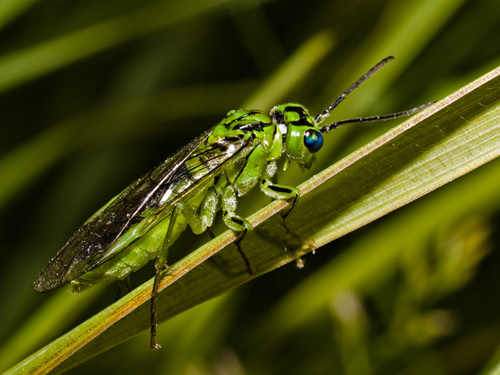Enmos
Valued Senior Member
Post your questions about any creature from the Kingdom Anamalia (Animals) here and I (and hopefully others) will try to answer it.
Below is the severely stripped down taxonomy of Anamalia. I left only the most well known groups (for practicality).
Ask a question:
- Keep your question confined to earth-based animals in their natural environment.
- Do not ask questions about human biology.
- I'd be happy to ID any animals you photographed. I probably will just google it, but heh..
- Oh what the heck.. throw in any mushroom questions as well.
Answer a question:
- Keep it mainstream.
- Do not mention God or any other paranormal stuff.
- No pseudoscience.
- Include links and pictures where possible and desirable as an addition to your answer.
I realize this thread will probably flop, but if doesn't it will be great
Ok, ask away !
--------------------------------------------------------------------
Kindom Animalia (Animals)
...Phylum Arthropoda (Arthropods)
......Subphylum Chelicerata
.........Class Arachnida (Arachnids)
............Order Aranea (Spiders)
............Order Opiliones (Daddy Longlegs, Harvestmen)
............Order Scorpiones (Scorpions)
......Subphylum Crustacea (Crustaceans)
.........Class Malacostraca
............Order Decapoda (Crayfish, Crabs, Lobsters, Prawns, Shrimp)
......Subphylum Hexapoda (Hexapods)
.........Class Insecta (Insects)
............Order Coleoptera (Beetles)
............Order Diptera (True Flies, Mosquitoes, Gnats)
............Order Ephemeroptera (Mayflies)
............Order Hemiptera (True Bugs)
............Order Hymenoptera (Ants, Bees, Wasps, Sawflies)
............Order Isoptera (Termites)
............Order Lepidoptera (Butterflies, Moths)
............Order Odonata (Damselflies, Dragonflies)
............Order Orthoptera (Crickets, Grasshoppers, Katydids, Locusts)
............Order Siphonaptera (Fleas)
...Phylum Chordata (Chordates)
......Subphylum Vertebrata (Vertebrates)
.........Class Actinopterygii (Ray-finned Fish)
.........Class Amphibia (Amphibians)
............Order Anura (Frog, Toads)
............Order Caudata (Salamanders)
.........Class Aves (Birds)
............Order Anseriformes (Waterfowl)
............Order Apodiformes (Hummingbirds, Swifts)
............Order Ciconiiformes (Storks, Herons, Egrets, Ibises, Spoonbills)
............Order Columbiformes (Doves, Pigeons)
............Order Cuculiformes (Cuckoos)
............Order Galliformes (Fowls)
............Order Passeriformes (Perching Birds)
............Order Piciformes (Woodpeckers)
............Order Psittaciformes (Parrots)
............Order Strigiformes (Owls, Goatsuckers)
............Order Struthioniformes (Ostriches, Emus)
.........Class Chondrichthyes (Cartilaginous Fish)
............Order Elasmobranchii (Sharks, Rays)
.........Class Mammalia (Mammals)
............Order Monotremata (Egg-laying mammals)
............Order Didelphimorphia (Marsupials)
............Order Artiodactyla (Cloven-hoofed Ungulates)
............Order Carnivora (Carnivores)
............Order Cetacea (Marine Mammals)
............Order Chiroptera (Bats)
............Order Lagomorpha (Hares, Rabbits)
............Order Perissodactyla (Odd-toed Ungulates)
............Order Primates (Primates)
............Order Proboscidea (Elephants)
............Order Rodentia (Rodents)
.........Class Reptilia (Reptiles)
............Order Crocodilia (Crocodilians)
............Order Squamata (Snakes, Lizards)
............Order Testudines (Turtles, Tortoises)
...Phylum Mollusca (Molluscs)
.........Class Bivalvia (Clams)
.........Class Cephalopoda (Octopuses, Squid, Cuttlefish)
.........Class Gastropoda (Slugs, Snails)
Below is the severely stripped down taxonomy of Anamalia. I left only the most well known groups (for practicality).
Ask a question:
- Keep your question confined to earth-based animals in their natural environment.
- Do not ask questions about human biology.
- I'd be happy to ID any animals you photographed. I probably will just google it, but heh..
- Oh what the heck.. throw in any mushroom questions as well.
Answer a question:
- Keep it mainstream.
- Do not mention God or any other paranormal stuff.
- No pseudoscience.
- Include links and pictures where possible and desirable as an addition to your answer.
I realize this thread will probably flop, but if doesn't it will be great
Ok, ask away !
--------------------------------------------------------------------
Kindom Animalia (Animals)
...Phylum Arthropoda (Arthropods)
......Subphylum Chelicerata
.........Class Arachnida (Arachnids)
............Order Aranea (Spiders)
............Order Opiliones (Daddy Longlegs, Harvestmen)
............Order Scorpiones (Scorpions)
......Subphylum Crustacea (Crustaceans)
.........Class Malacostraca
............Order Decapoda (Crayfish, Crabs, Lobsters, Prawns, Shrimp)
......Subphylum Hexapoda (Hexapods)
.........Class Insecta (Insects)
............Order Coleoptera (Beetles)
............Order Diptera (True Flies, Mosquitoes, Gnats)
............Order Ephemeroptera (Mayflies)
............Order Hemiptera (True Bugs)
............Order Hymenoptera (Ants, Bees, Wasps, Sawflies)
............Order Isoptera (Termites)
............Order Lepidoptera (Butterflies, Moths)
............Order Odonata (Damselflies, Dragonflies)
............Order Orthoptera (Crickets, Grasshoppers, Katydids, Locusts)
............Order Siphonaptera (Fleas)
...Phylum Chordata (Chordates)
......Subphylum Vertebrata (Vertebrates)
.........Class Actinopterygii (Ray-finned Fish)
.........Class Amphibia (Amphibians)
............Order Anura (Frog, Toads)
............Order Caudata (Salamanders)
.........Class Aves (Birds)
............Order Anseriformes (Waterfowl)
............Order Apodiformes (Hummingbirds, Swifts)
............Order Ciconiiformes (Storks, Herons, Egrets, Ibises, Spoonbills)
............Order Columbiformes (Doves, Pigeons)
............Order Cuculiformes (Cuckoos)
............Order Galliformes (Fowls)
............Order Passeriformes (Perching Birds)
............Order Piciformes (Woodpeckers)
............Order Psittaciformes (Parrots)
............Order Strigiformes (Owls, Goatsuckers)
............Order Struthioniformes (Ostriches, Emus)
.........Class Chondrichthyes (Cartilaginous Fish)
............Order Elasmobranchii (Sharks, Rays)
.........Class Mammalia (Mammals)
............Order Monotremata (Egg-laying mammals)
............Order Didelphimorphia (Marsupials)
............Order Artiodactyla (Cloven-hoofed Ungulates)
............Order Carnivora (Carnivores)
............Order Cetacea (Marine Mammals)
............Order Chiroptera (Bats)
............Order Lagomorpha (Hares, Rabbits)
............Order Perissodactyla (Odd-toed Ungulates)
............Order Primates (Primates)
............Order Proboscidea (Elephants)
............Order Rodentia (Rodents)
.........Class Reptilia (Reptiles)
............Order Crocodilia (Crocodilians)
............Order Squamata (Snakes, Lizards)
............Order Testudines (Turtles, Tortoises)
...Phylum Mollusca (Molluscs)
.........Class Bivalvia (Clams)
.........Class Cephalopoda (Octopuses, Squid, Cuttlefish)
.........Class Gastropoda (Slugs, Snails)








